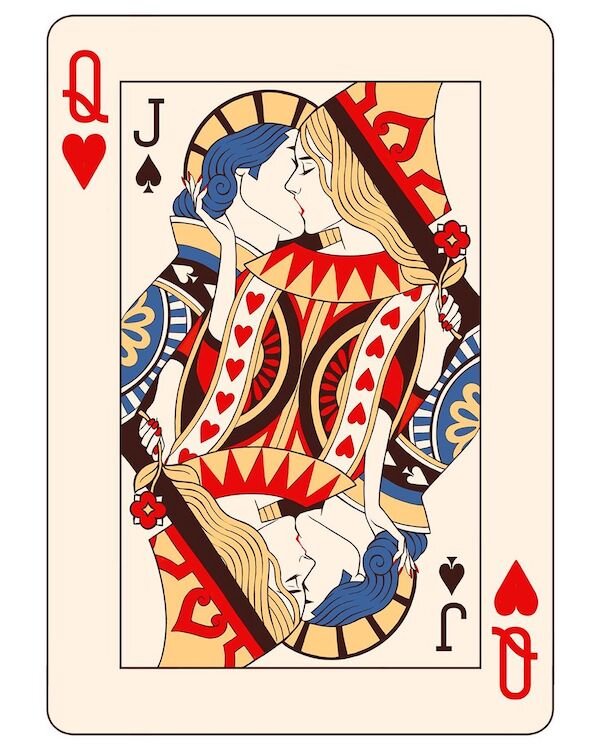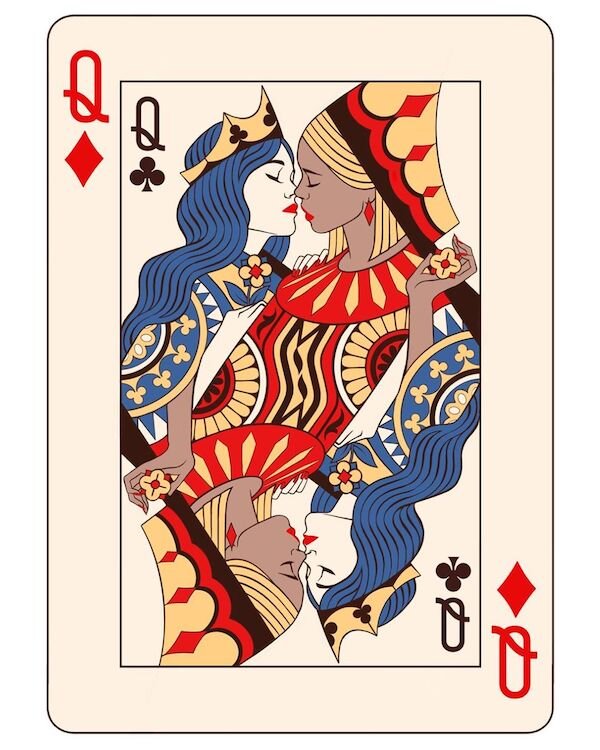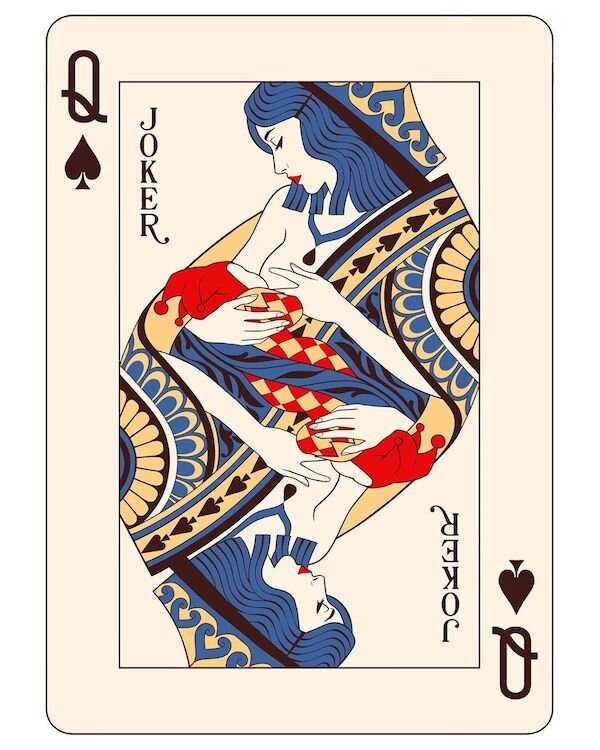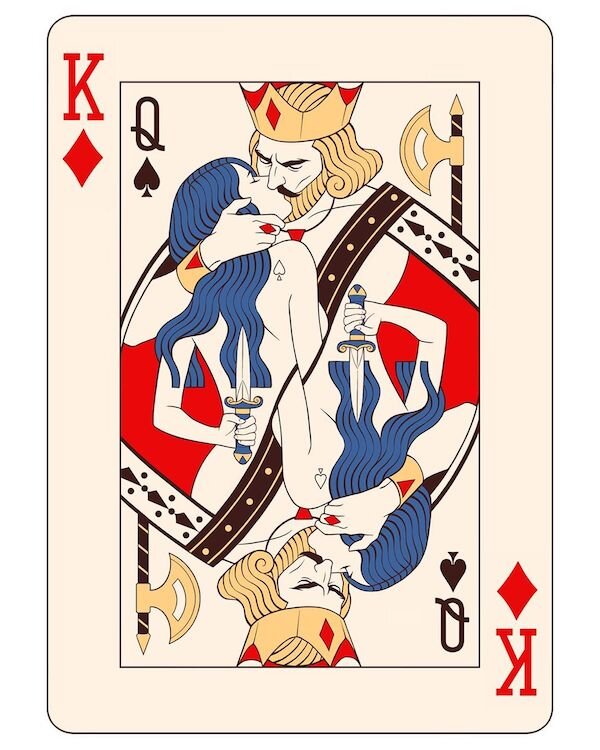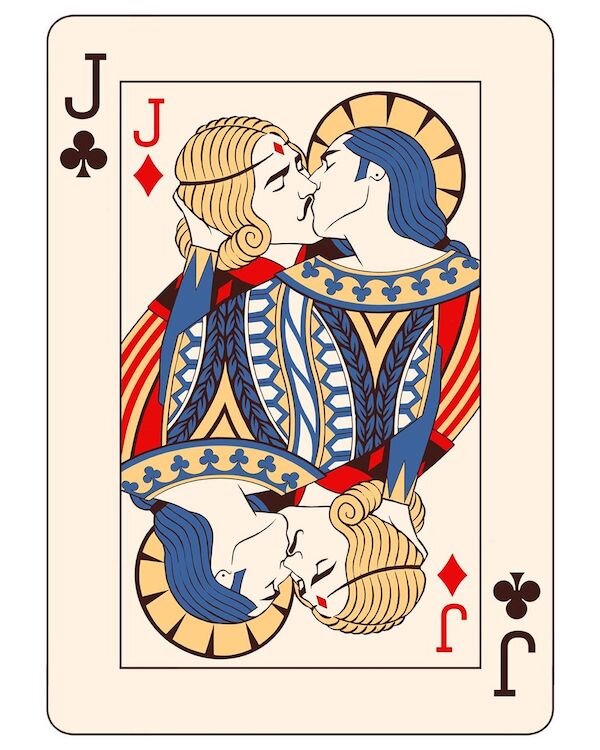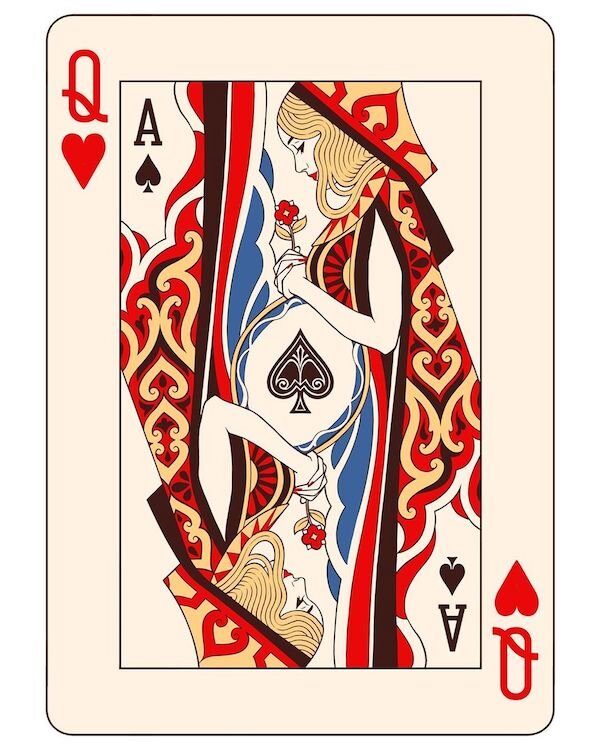Until October...
/It’s Saturday afternoon and I’m watching Luke Jermay, Michael Weber and Max Maven having a discussion about Zoom magic as part of Vanishing Inc’s Masterclass series.
It’s kind of interesting, but as a social performer, it’s nice to no longer have to worry about this stuff. Not that we’re completely past coronavirus concerns, of course. But for the most part, I can find people in real life to show something to when I want to. I’m nowhere near the pace of performing I was at before all of this, but that’s okay. I was a real magic slut then. I’m just being a little less promiscuous for the time being.
Everyone is still pretty well masked up where I am, in the northeast U.S. I would say it seems like 99% of the people have a mask on in public. I tried a mentalism type thing with one of the barista’s at a coffee shop I frequent. I let it fail a couple of times and then I said. “Okay, I’m going to step back a little bit. When I do, would you mind taking off your mask for me? It will just be for a few seconds. But it’s kind of getting in the way of what I’m hoping to pick-up from you.” Without hesitation she was okay with the idea and she took off her mask and it was like the goddamn Dance of the Seven Veils with how exposed she seemed. It was a weirdly intimate moment.
“You’re the first person who has seen my face in here in six months,” she said. “I never thought I’d feel shy about someone seeing my mouth.”
It was fun. As much as the coronavirus situation has been terrible, I’ve been enjoying riding the wave of the shifting dynamics of social interactions as we’ve progressed through it.
I will be curious to see how this plays out for professional magicians. I’ve heard from some who were actually excited by how well things were going for them when everything was locked down hard, but now that things have opened up more, they’re in a kind of limbo state where people aren’t going out to see a show, but they don’t want to be locked in their home seeing a show either when there are some places they could be going.
We’ll see how it goes. My instincts tell me that Zoom magic is not the way of the future for professional performers. That the sort of people who want to see a magic show are the sort of people who want to get out of their house to do so. But who the hell knows.
Someone wrote me saying that Zoom shows were good because you “get to see people’s reactions” more so than you do in a theater. But… do you? Certainly you don’t watch the show with 40 other boxes on the screen, right? You just watch with the magician’s box up (for the most part), unless the magician is doing something for one particular audience member. And while I guess it’s good that you get a good close-up of that person’s reaction, I think it could backfire just as well, making them self-conscious about how they’re reacting with a camera in their face. Plus, you lose a lot of the charm if you’re David Copperfield and you’re floating a paper rose for someone in their living room 500 miles away, as opposed to the amateur model in the mini-skirt that you plucked from the audience.
But those are issues for you professional magicians to concern yourself with. I’m done with that Zoom shit.
I was planning to email you to let you know that “Dai Vernon” [from last Wed/Thur posts] was wrong. I purchased Ellusionist’s new ringflite effect and performed it a few times last week and got extraordinary reactions.
This weekend I learned that both of the people who had reacted strongest to the effect had googled something like “ring keychain magic trick” and had discovered the trick online. So Dai was right. It sucks. I want to go back with Dai and perform in the 1970s. —CP
Yeah, it sucks. It’s the catch-22 of modern performing. A trick that hits them really hard is going to be a trick that they’ll take steps to understand more in some way.
Sometimes, by manipulating the emotional element of the trick, you can misdirect them away from the instinct to google a trick. But unfortunately putting someone’s ring on a keychain is not a super emotionally resonant effect.
Is the load on that new ring-flite easy enough that you could load a key onto it?
I’m imagining having someone take out their keychain and remove one of their keys (emphasizing the mildly arduous nature of this task). Have them hold their keychain in the palm of their hand. False transfer the key from your right to left hand. Now “massage” the (non-existent) key with your left-hand against the keychain in their hands. You say you’re going to make the key penetrate onto the keychain. You lift your left hand, and the key is gone. They look through their keychain, but it’s not there. You then go on to reveal that you never said which keychain the key would penetrate onto and you pull out your keychain to show the key is hooked on there.
I don’t know if that’s any good of an idea, or even if it’s doable. But I do think I could come up with a better presentation for their key appearing on my keychain, rather than their ring. I may pursue it if it’s possible.
Christopher H. wrote in to suggest something that might have some magical presentation uses. I haven’t quite decided how I feel about it just yet. I think there’s a possibility that it would lead to ideas that are a bit too convoluted, but there might be some way to keep it from veering into that territory as well. I’ll just share the idea with you here and maybe you can play around with it.
There’s a website/app called what3words, and it has broken up the world into three-meter squares and each square has a three word code associated with it. So whether you’re at someone’s front door, in the middle of the ocean, or lost in the woods, you can identify precisely where you are with that three word phrase. And if you can communicate that phrase to someone else, they can find you (the three word phrase for a given square of the earth never changes).
The problem is that you’d have to explain this concept to people to get them to understand what the hell you’re talking about.
But you can see how—if this concept was clear to people—you could force words to lead to a specific location. Or force a location (dry marker on map) to lead to certain words.
Almost any three word phrase has been assigned to some location in the word. jerky.magic.blog is in Gayndah, Queensland, Australia.
I think there’s potential here for magic uses. But even if not, I’ve found people to be pretty entertained just by looking up what three words are assigned to exactly where you are at that moment.
I really like these Secret Lovers playing card images by Mahdieh Farhadkiaei that combine two values into one card. They don’t exist as an actual deck, but it would be cool if they did. Ideally the cards would exist singly as well. So you could force the Jack of Spades and the Queen of Hearts on a couple and then do an Anniversary Waltz type of merging of the cards into one.
Good god, it’s been hours and these nerds are still talking about Zoom magic. They’re barely listening to each other. Just rambling on and on about nothing. Let me transcribe some of it for you…
Michael Weber: I like doing magic over Zoom because it means that bullies can’t punch me and steal my gimmicked decks.
Luke Jermay: What’s your favorite trick to do on Zoom? My favorite is to turn my laptop towards my television which is playing the performance section from one of Sankey’s old L&L tapes while I go into the next room and try to drink the night away. Why bother anymore?
Max Maven: Sweet Christ, what has my life become? I’m 85 goddamn years old. I was a titan in the world of magic. And now I have to perform for idiots in their pajamas over Skype to make a nickel? I haven’t had a paid gig in months. My best offer was from Ellusionist who wanted me to create a series of downloads aimed at their target demographic called Max Maven’s Tricks with Bubble Gum: Animal Crossing Edition.
Weber: I think we should all say our favorite lines to use against hecklers and bullies. I thought people would be nicer over Zoom because they can’t make fun of my sneakers. But now they’re just making fun of me for how messy my living room is. Do you guys know any good lines to get them to stop being mean?
Jermay: This is—by far—the darkest period of my professional life… and I put out a book with Kenton Knepper!
Maven: Picture it. 1979. Me. Eugene. McBride. Walking—three-across—down Hollywood Boulevard. Bitches be like:
Cut to: Me and the boys in a hotel room. Ice bucket filled with cocaine. Passing around the ladies like party-favors. Wake up, it’s Monday. Go to sleep. Wake up again, it’s Saturday. Go to the Castle. Do 5 minutes of performing and reload on the women and the blow. Party all day. Party all night. Fighting. Fucking. Dancing my little booty off, buck-ass naked with a rainbow coalition of skanks. Go to bed, it’s the 4th of July. Wake up, it’s Christmas. What a time to be alive.
Now what has my life become? Today I was trying to find the right shade of black construction paper to put on the back of my playing cards so they’ll blend into my close-up pad because I had a client tell me they’d only hire me if I can do “what Shin Lim does.”
Earlier this week I got all happy because I realized I could just use a Zoom filter to put on my widow’s peek, rather than draw it in every night. Maybe save myself $28 in mascara cost this year. Whoop-dee-damn-doo.
Weber: I just don’t know why bullies have to be mean to you when all you want to do is show them a trick and have fun and be friends!
***
Holy moley. It’s been four hours of this. Yikes. This is a sad time for magic.
Okay everyone. I’ll see you back here October 1st. Take care of yourself until then.

